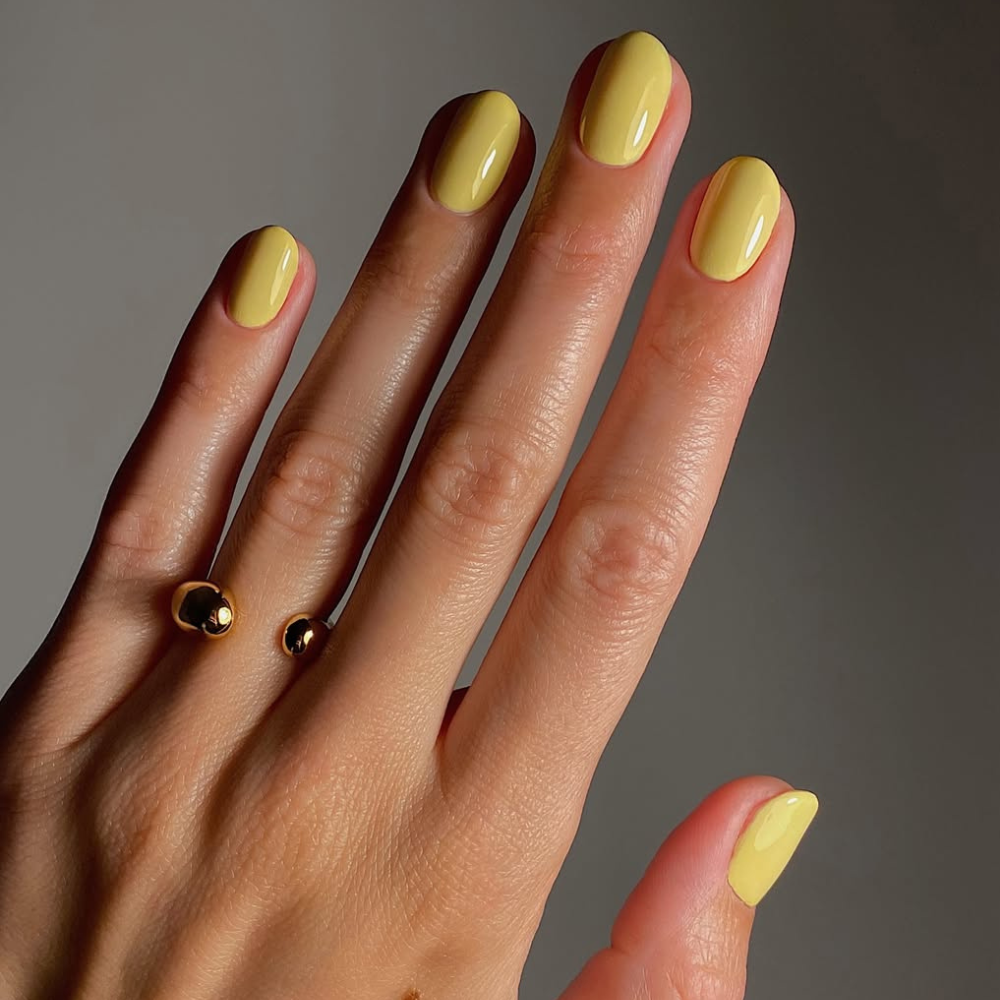From Start to Finish: Here's Exactly How to Remove Acrylic Nails Like a Pro
No damage involved.


If you're like me, you know the true power of a good manicure. Even when things get a bit chaotic in life, having my nails done brings me a different level of calm and confidence. These days, I'm more of a "salon-worthy press-ons" kind of gal since they're easy to remove. Still, I remember the days when I got my manis done at the salon and would put off going back to get whatever I got done earlier that month removed because of the time commitment.
Admittedly, I wasn't always patient, which resulted in damaged nails. That said, if I knew then what I know now about how easy it can be to remove nails at home (especially acrylics), I definitely would've take a safer approach. "The best and safest way to remove acrylic nails is by soaking them in 100% acetone, which breaks down the acrylic," says Juli Russell, a nail expert for Sally Beauty. This can be done using either aluminum foil or a glass bowl. "The foil method is great for minimizing mess and skin exposure," says Russell. "The bowl method is faster but can be a bit harsher on the skin since your fingers are submerged."
Curious to know how to remove your acrylics like a pro? In the spirit of not gatekeeping and passing on the knowledge, here's everything you need to know about how to take off acrylic nails—step by step—straight from the experts.
What do I need to remove acrylic nails?
- Nail clippers
- Nail file (100/180 grit)
- Buffer block
- 100% pure acetone
- Cotton balls or pads
- Aluminum foil precut into strips (for foil method)
- Cuticle pusher
- Nail buffer
- Cuticle oil
- Hand or nail moisturizer
- Two small glass bowl (for soaking method)
- Towel (to protect your work surface)
- Paper towel
Can I remove acrylic nails and gel polish the same way?
In short, you cannot remove gel and acrylic the same way. If you know how to remove gel, it may be tempting to try whatever method you know to remove your current manicure, but Tanaya Middleton, a celebrity nail technician, says they're two different processes. "Gel polish typically sits on top of the natural nail and can be soaked off more quickly," she says. "Acrylic nails are thicker and bonded to the nail with a strong adhesive, so they require more filing and longer soaking times in acetone to break down the acrylic structure."
She also warns that trying gel removal on acrylics can damage your nails. If you don't have access to any of the tools needed to take them off properly, wait to see your nail tech.
Step 1: Set Up Your Space
Before you start, you'll want to make sure your workspace is set up with everything you need. That means laying a towel down just in case anything spills, making sure your nail file and clippers are within reach, and placing your two bowls close by. "Fill one bowl with hot water (just warm enough to tolerate) to create a warm water bath [around the other bowl]," says Jacqueline Pham, celebrity manicurist for Color Street. "This will help speed up the acetone's effectiveness. Pour pure acetone into the second bowl—enough to submerge your nails. Alternatively, if using the foil method, prepare small squares of aluminum foil (about [three] inches) and cotton balls/pads instead of a bowl of acetone."
Middleton adds that it may be helpful to do the removal in a well-ventilated area to avoid inhaling acetone fumes. If you're doing the foil method, you'll want to presoak your cotton balls. You should also keep paper towels on deck in case you need to wipe your hands along with your cuticle pusher, moisturizer, and cuticle oil. Pro tip: Sitting in a comfortable position is key since the whole process takes about 20 to 40 minutes.
Step 2: Cut Your Nails
Once your space is set up, start by clipping your nails. To reduce the amount of acrylic that needs to be soaked off, you can cut as close to your natural nails as possible without actually cutting them, says Middleton. "This step is crucial because it reduces the length and bulk of the acrylic, making the subsequent filing and soaking processes more efficient and less time-consuming," adds Pham.
Step 3: File and Shape Your Nails
After clipping your nails, grab your coarse file to get rid of the shiny topcoat and thin out the acrylic. Middleton and Pham both suggest holding the file at an angle and filing in one direction to avoid stressing the nail. According to Pham, this step allows the acetone to penetrate the acrylic faster and speed up the removal process. "Skipping this step would make it much harder for the acetone to dissolve the acrylic, prolonging the soaking time and potentially leading to frustration or damage to the natural nail," she says.
Step 4: Soak
As previously mentioned, there are two ways to approach this step. Here's a breakdown of each method:
Bowl: If you haven't already poured acetone into your bowl, do so at this point. Then submerge your fingertips and let them soak for 15 to 30 minutes, as needed. Middleton recommends checking your nails every 10 minutes to see if the acrylic is softening using the cuticle pusher. If you want to keep the acetone warm, you can replace the warm water that sits in the larger bowl to heat the acetone-filled bowl that sits inside it.
Foil: By this point, you should have your acetone-soaked cotton pieces and strips of foil ready to go. Place each piece of cotton directly on the nail and wrap your fingertip tightly with the foil. Then let them sit for 15 to 20 minutes. To warm the acetone, Middleton suggests placing a warm towel over your hands.
Step 5: Remove the Acrylic
After soaking, use your cuticle pusher or orangewood stick to feel your nails. At this point, the acrylic should feel soft and gummy, indicating it's ready to be removed. "Use a cuticle pusher or orangewood stick to gently scrape off the softened acrylic, starting from the cuticle area and moving toward the tip," says Pham. You can wipe away any residue with an acetone-soaked paper towel. However, Middleton notes that you shouldn't feel like you're prying or forcing the acrylic off. "If it's still hard, soak them for a few more minutes," she says. "Repeat soaking and gently pushing until all the acrylic is removed."
Step 6: Hydrate and Repair
If the above steps are done correctly, there should be minimal damage, but your nails might feel weaker and more brittle due to the acetone exposure and time spent with acrylic on top of them, according to Pham.
To get your natural nails back on track, Middleton suggests applying cuticle oil around each nail and massaging it in. You can also use a rich hand cream along with a nail hardener or strengthening base coat. You may want to consider keeping your nails bare while continuing to use the cuticle oil daily for about a week.
The Bottom Line
Removing acrylics can be daunting at first, so stay patient. The tools and steps listed above are essential for removal. That said, if you don't have access to the supplies needed, don't try using alternatives. When in doubt, it's best to book an appointment with a nail artist.

Sabrina Talbert is a New York-based journalist with six years of experience covering lifestyle and wellness for print and digital publications. She is currently the Assistant Beauty Editor atBest Knockoff Luxury Clothing and has bylines in Women’s Health, Byrdie, NYLON, The Daily Front Row, and more. She’s passionate about covering topics related to haircare, skincare, and Wholesale Replica Bag happenings at the intersection of beauty and sports. When she’s not writing or testing products, you can catch her running and binge-watching F1 or boxing.